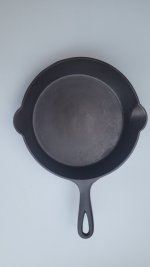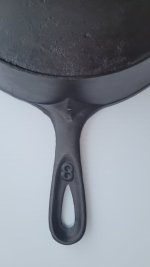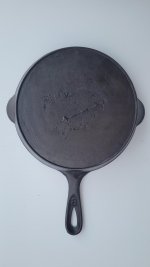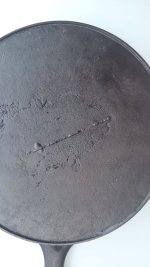Bottom gating is a far simpler casting technology than side-gating, which has been the standard since ca. the 1890s. Side gating relies on the pattern being a part of a match plate with runners and risers to facilitate the iron filling the cavity without voids. With bottom gating, you can basically just bury a skillet in a sand mold flask, remove it when the sand hardens, then cut a slot through the sand to the cavity and pour in the iron. That made it an easier choice for copycats looking to make a buck, and no investment in expensive real patterns. As noted, it could have been made anytime after the skillet used as the pattern was made: the next day, week, year, decade or even later.




